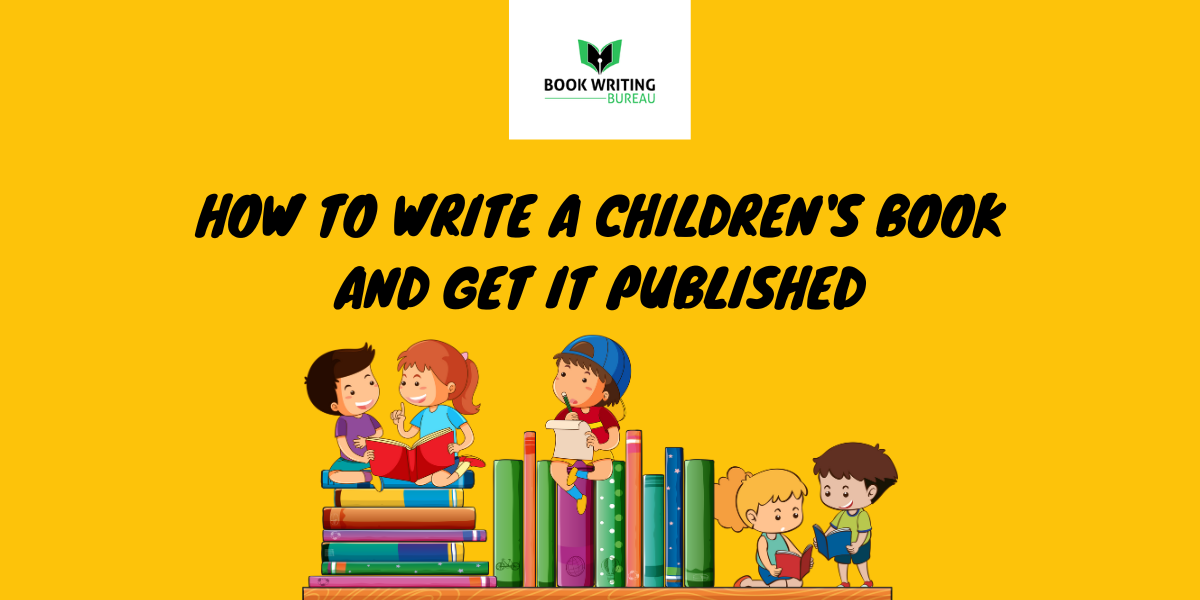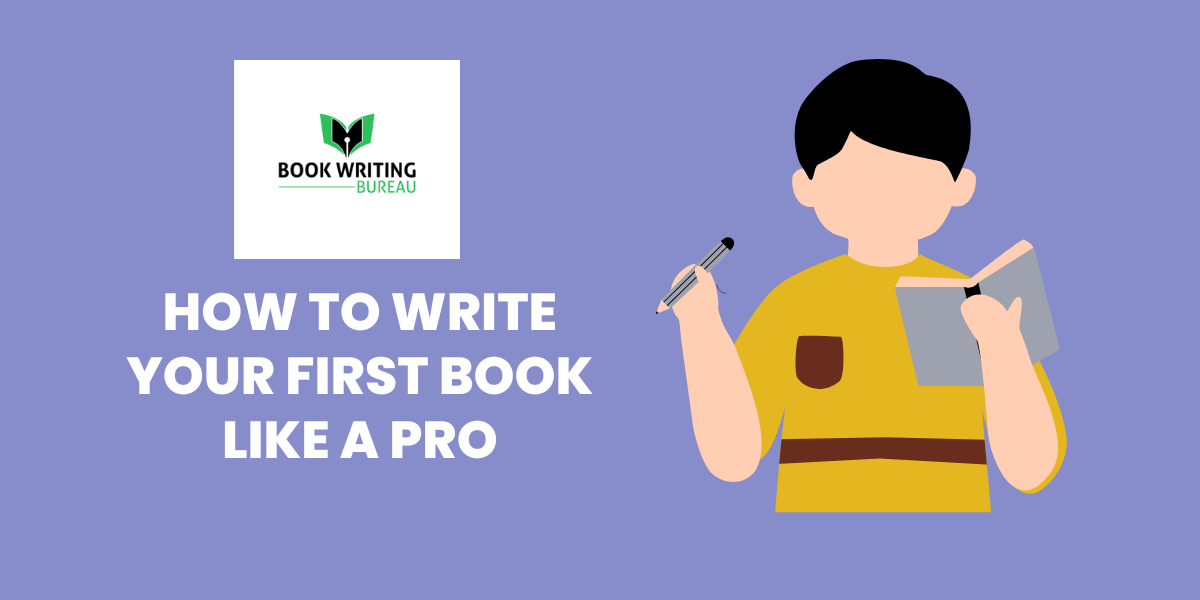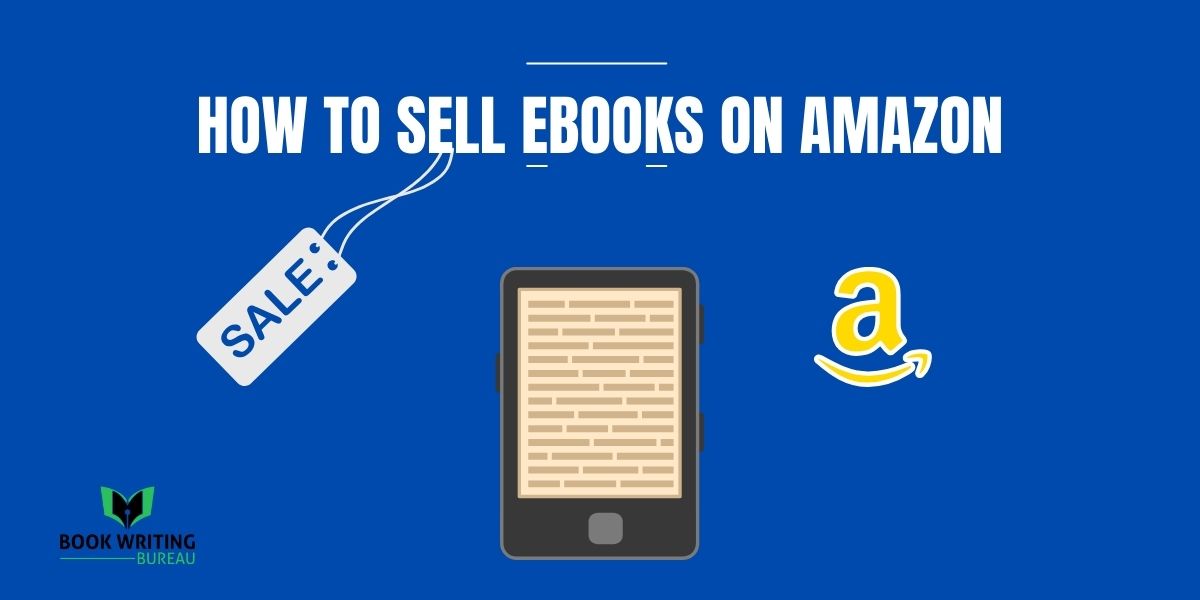
Book
Enjoy the entire article by clicking on the audio play button.
Have you ever wanted to create a magical world of adventure and wonder for young readers? Are you ready to reveal your inner storyteller and bring your children’s book writing ideas to life? Well, you’ve come to the right place! Writing children’s books is a thrilling and fulfilling experience, but publishing them can seem daunting. That’s why we’ve created this blog to guide you through the process step-by-step.
Whether you’re an experienced author or just a beginner eBook writing services provider, we’re here to inspire you to make your children’s book dreams a reality. So, let’s dive into this enchanting world of imagination and start creating the next beloved children’s classic!
What is a Children’s Book?

Children’s books encompass a vast range, from young adult novels to board books for infants. Typically, a children’s book targets an audience between 0-8 years old. However, the standards and skills required vary greatly across this spectrum.
Or instance, young adult books without pictures contain intricate plots, worldbuilding, and character development. Conversely, picture books engage younger readers with minimal text and vivid illustrations.
Why write a children’s book?

There are multiple reasons you may want to write a children’s book. Maybe you want to share your knowledge with the next generation. Or maybe you just want to make some extra money by writing something fun and inspiring. This list is here to help you understand all of your options when it comes time to decide if writing a children’s book is right for you:
The need to write a children’s book
If you are passionate about writing children’s books and desire to share your talents with the world, writing a children’s book is an excellent way to do so. Writing a children’s book can be an excellent investment in your future. You may not make much money when you first publish your book. However, if it becomes popular and sells well, there are many opportunities for success.
It’s a great investment in your future.
Writing a children’s book can be a great investment in your future. So you can write your first book and make money from book sales, royalties, and speaking engagements for a long time.
You may also earn extra income if someone wants to use one of your stories in some form of media, such as film or television production. This would be considered licensing rights and could bring in additional revenue streams for you!
Loads of money from writing a children’s book.
You can sell your book and make money from it. You can also sell the rights to your book, such as publishing or movie rights. Someone may want to buy them from you, which could lead to even more profit!
If you want even more cash, try selling your books internationally. Many people worldwide love reading children’s stories, and they may be willing to pay higher prices for them too!
Teach children about important things:
If you have values, you want children to learn; this can be a great way of communicating with them. For example, if one of the most important things in your life is faith or spirituality, writing a book that teaches this will give them a foundation for your spiritual journey.
If family values are important, you can share them through writing. You can also write a book about your life for kids.
How to Write a Children’s Book in 10 Easy Steps

If you’re an aspiring children’s writer, chances are you’ve already got a story in mind. Whether that story is a poem or an illustrated book, turning it into reality can be daunting. But if you follow these simple steps, we promise your dreams will no longer be out of reach!
Following are the 10 steps you should follow to write the best children’s book out there.
1- Find a story that you want to tell.
To begin writing a children’s book, find a story you want to tell. It can be a story that you have heard or read, a story that you have experienced, or even something that you have imagined yourself!
The important thing is that this is the one story where all your ideas come together perfectly. So take some time and think about what makes YOU feel most passionate about writing now. Once you have a story in mind, start writing. Write it down, even if it’s just on a piece of paper or your phone.
When you’re done, read through what you wrote and ask yourself: Is this a story I want to tell? Does it feel like it has come from my heart and soul? If not, then try again! Once you have a story that speaks to you, start thinking about how to share it with others.
2- Research the children’s book market.
Before you begin writing your book, it’s important to research what’s popular in the children’s book market. This will help you get an idea of what age range you should write for and whether there are any trends in your genre.
You can start by looking at bestsellers from different publishers or book writing companies and seeing if there are any similarities between them. You might also want to read some reviews on Amazon to know what people like or dislike.
Once you’ve decided what age range you want to write for, start by writing a short story about your main character and their world. You can do this either by hand or on the computer. If you’re more comfortable writing by hand, consider keeping a notebook with you at all times so that whenever an idea comes to mind, you can quickly jot it down in case it slips your mind later.
3- Develop your writing skills.
Writing a children’s book is a serious business and requires a lot of hard work, so ensure you have the necessary tools for success. The first thing to do is learn about the craft of writing and how you can improve it by reading books on the subject.
Next, start writing! It’s important not just because it gives you practice but because getting feedback from others will help shape your story in ways that might otherwise go unnoticed. Once again: join an online community where people will help critique each other’s work!
4- Write a short outline of your story:
A children’s book outline is what you use to keep track of the overall story. It’s not a replica of how your book will look when finished but rather a general plan for how everything fits together.
When writing an outline, you want to make sure that each paragraph has one point and doesn’t go on too long or get too wordy. Your goal is just to give yourself enough information so that when we get into writing our first draft, there aren’t any surprises along the way!
The main things we want out of our outline are 1) themes; 2) characters; 3) plot points/scenes; 4) setting and mood 5) conflict/struggle between characters (if applicable).
5- Write your first draft.
This is the time to let go of any fears you may have about spelling or grammar and just get words down on paper (or screen). There will be so much time later to make edits and revisions, so just focus on getting your story down as best you can right now!
When it comes to length, don’t worry about how many pages or words are in your rough draft–it doesn’t matter yet. Just write a children’s book draft until it feels complete; when that happens, stop writing and move on!
The most common problem in drafts is that they are too long, not because the writer has chosen to write a lot of content but because they haven’t cut anything out. It’s not uncommon for someone to have their first draft 100 pages long when it should have been 20 pages long.
To avoid this problem, try using an “outline” or “mind map.” This is where you take your rough draft and start breaking it into smaller chunks. Just as if you were splitting a tree into firewood.
6- Enjoy the first draft stage!
The first draft is the fun part! You can write children’s books without worrying about grammar or spelling, plot holes, character development, and formatting. Just write down whatever comes to mind in order of importance as you go along.
Once you have a first draft, it’s time to go back and fix everything that needs fixing.
7- Expand your outline in 2nd draft:
In the second draft, you’ll expand your outline and create a more detailed version of each scene in your book. You will also begin filling in the gaps left open during the first draft.
Your goal for this stage is to make sure each character has a purpose and that every scene is fully developed (including dialogue and descriptions of setting, mood/tone). Ensure that your story has a beginning, middle, and end–so it makes sense!
If there are any plot holes or inconsistencies in logic or evidence, then fix them before moving on to the next step. The third draft is where you will polish and refine your story. You’ll ensure that each scene flows smoothly into the next and that your characters are fully developed and consistent. This stage is about ensuring every word on the page serves a purpose. And if any word doesn’t, then it needs to go!
8- Write for your intended audience.
You should write for your intended audience. You might not have one yet, but when you do, it’s important to know who they are. This will help you to tailor the rest of your book based on that knowledge. If you’re writing for young children, think about how old they are and what kind of things they like to read (and watch).
You may think this sounds like a lot of work, but it doesn’t have to be. Once you’ve got an idea for your book and some characters in mind, just start writing! You’ll know what works and what doesn’t once you begin writing the first draft.
9- Keep rewriting until perfect:
Once you’ve written your manuscript and revised it as many times as necessary, craft something ready for publication or submission to agents or editors.
This is called editing. It’s part of the writing process, even if you’ve already done a lot of editing when revising. You may need to do more rewriting than usual because this project has been at least partly created out of thin air–you’ve never seen anything like it before! The more times you rewrite, the better your book will be!
10- Perform one last check of your manuscript:
Perform one last check of your manuscript for spelling errors, grammar mistakes, continuity issues, and other potential problems before submitting it. Ensure you have ticked out everything below to ensure the book is ready.
- Spell check
- Grammar check
- Proofread the whole thing out loud to yourself (if possible)
- Get a friend or family member to read it out loud to you
- Before submitting to a publisher, Have a professional copy editor review your manuscript.
How to get a children’s book published

Now that you have learned how to write a children’s book above let’s see how you can publish it as well. Publishing is a hard task once you write, format, and design a book’s spine and cover. There are different publications; however, let’s focus on the basic details.
Whether you want to explore traditional publishing or self-publishing, we are here to answer all your burning questions. In this section of the expertise to guide, you can learn how to become a successful published children’s book writer. So, let’s bring your story to life and inspire young readers’ imaginations everywhere!
1- Know Your Target Audience
Congratulations on writing a children’s book! But hold on a minute before you publish; it’s crucial to know your target audience. If you market your picture book to infants when it best suits 2-5-year-olds, you’re doing it wrong. Similarly, you’re heading for trouble if you pitch your YA novel as middle-grade fiction.
Young readers enjoy stories with relatable characters who are either their age or a bit older. So, do your research! Look into what themes and keywords are trending. Find out who is publishing similar books and which authors are popular with your target audience.
When seeking an editor or literary agent, make sure you can demonstrate your understanding of your book’s target audience. This reflects your knowledge of the industry, something editors and agents value in an author.
Children’s books come in five categories based on age ranges, from board books for 0-3-year-olds to young adult novels for 12-18-year-olds. It’s worth noting that over half of YA book, readers are adults over 18. While YA is intended for 12- to 18-year-olds, it often appeals to a broader audience. So, keep these age ranges in mind as you write and publish your book, and let’s inspire young readers everywhere!
2- Refine Your Manuscript
Are you ready to take your children’s book to the next level? Then refining your manuscript is a critical step you cannot afford to skip. Keep improving your book until you can’t think of any other way to improve it.
By refining your manuscript, you make an editor’s job more effective. If an editor is working with your best possible product, they can make it even better.
Spelling and grammatical errors will turn your readers off and lead to negative reviews. Additionally, editors may become underwhelmed by simple mistakes instead of focusing on style and word choice.
Refining your manuscript also means enhancing your story. You may realize it takes six pages to get interesting, so why not move the “hook” to the first two pages and captivate your readers? So, let’s refine your manuscript, elevate your story, and create a book that will inspire and delight young readers everywhere!
3- Find an Agent:
Are you interested in traditional publishing for your children’s book? Then finding a literary agent is probably your best bet. Traditional publishers rarely accept unsolicited manuscripts from un-agented authors, so having a literary agent can increase your chances of getting published.
When seeking a literary agent, look for someone who specializes in representing children’s literature. Don’t waste your time or theirs by querying an agent who doesn’t handle children’s books.
If you’re considering independent book publishers near me, most don’t require an agent to submit your manuscript. However, a few might. Having an agent can improve your submissions and help identify which indie publishers are the best fit for your book.
So, let’s find the right literary agent or independent publisher to bring your children’s book to life and inspire young readers everywhere!
4- Submit Your Manuscript to Publishers
Ready to show and submit your manuscript to a publisher and get your children’s book published? Great! There are two ways to deal with it. First, you can query a literary agent who will negotiate the best deal for you and submit your manuscript to publishers on your behalf. This is a common route for many authors, especially those pursuing traditional publishing.
Alternatively, you can submit your manuscript directly to publishers who accept unsolicited submissions from un-agented authors. This approach requires a bit more research and legwork, but it can be a great option for independent authors looking to break into the industry.
So, whether you work with a literary agent or submit your manuscript directly to publishers, let’s get your children’s book out into the world and the hands of eager young readers!
FAQs

How much does it cost to publish a children’s book?
The cost of publishing a children’s book can vary widely depending on factors such as the quality of illustrations, printing costs, and marketing expenses. If you plan to self-publish, the cost can typically range from a few hundred dollars to thousands.
Typically, a children’s book with full-color illustrations can cost around $3,000 to $5,000 to produce. However, this can be higher or lower depending on the complexity of the illustrations, the printing method, etc.
If you’re going through a traditional publishing route, you may not have to pay anything upfront. Instead, the publisher will cover the costs of producing and marketing your book, but you’ll receive a lower royalty rate in exchange.
How to publish a children’s book on Amazon?
To publish and sell eBooks On Amazon, first, create a free Kindle Direct Publishing (KDP) account. Next, format and upload your book and set a price. Finally, promote your book using social media and other marketing tactics to find your target audience.
How to find a publisher for a children’s book?
To find a publisher for your children’s book:
- Research publishers that specialize in children’s books.
- Review their submission guidelines, write a query letter, and submit your manuscript.
- Consider hiring an agent if you’re having trouble finding a publisher.
- Be patient and persistent, as finding the right fit for your book may take time.
Is selling children’s books profitable?
Selling children’s books can be profitable, but the amount of profit depends on various factors, such as the book’s quality, marketing efforts, pricing, and competition. If you have a high-quality book that resonates with your target audience and is priced competitively, you have a good chance of making a profit. However, it’s important to remember that the children’s book market is competitive, and success may take time and effort.
Is it hard to publish a children’s book?
Publishing a children’s book can be challenging, but it’s not necessarily harder than publishing other books. The process includes writing, finding a publisher or self-publishing, formatting, and marketing. Although each step may be tough, you can successfully publish your children’s book with perseverance and the right resources. Be sure to do your research, follow submission guidelines, and don’t be discouraged if you receive rejections.
What is the most popular children’s book now?
The most popular children’s book frequently changes, as new and exciting titles are always being released. Some current popular titles include “Dog Man” by Dav Pilkey, “The One and Only Ivan” by Katherine Applegate, and “Diary of a Wimpy Kid” by Jeff Kinney. However, popularity can vary based on different factors, such as age group, genre, and personal preferences.
How much money can you make writing a children’s book?
The amount of money you can make from writing a children’s book varies and depends on many things. It may depend on how good the book is, how you promote it, and the price. How many copies you sell and the royalties will also affect your earnings.
Some children’s book authors have made lots of money, while others make a more modest income. However, there is no guarantee that you will make money from writing a children’s book, as success depends on many factors.
Conclusion:

Congratulations! You’ve made it to the end of our guide on writing a children’s book and publishing it. We hope you’ve found our tips and advice helpful in becoming a published children’s book author.
Remember, children’s book writing is an exciting and rewarding experience. However, it also requires patience, perseverance, and hard work. Don’t be discouraged by the challenges you may face along the way. Keep pushing forward, and never give up on your dreams. With dedication, creativity, and the right resources, you can create a wonderful world of imagination for young readers and make a lasting impact on their lives. So, go ahead and start writing – who knows, you might just be the next big name in children’s literature!



